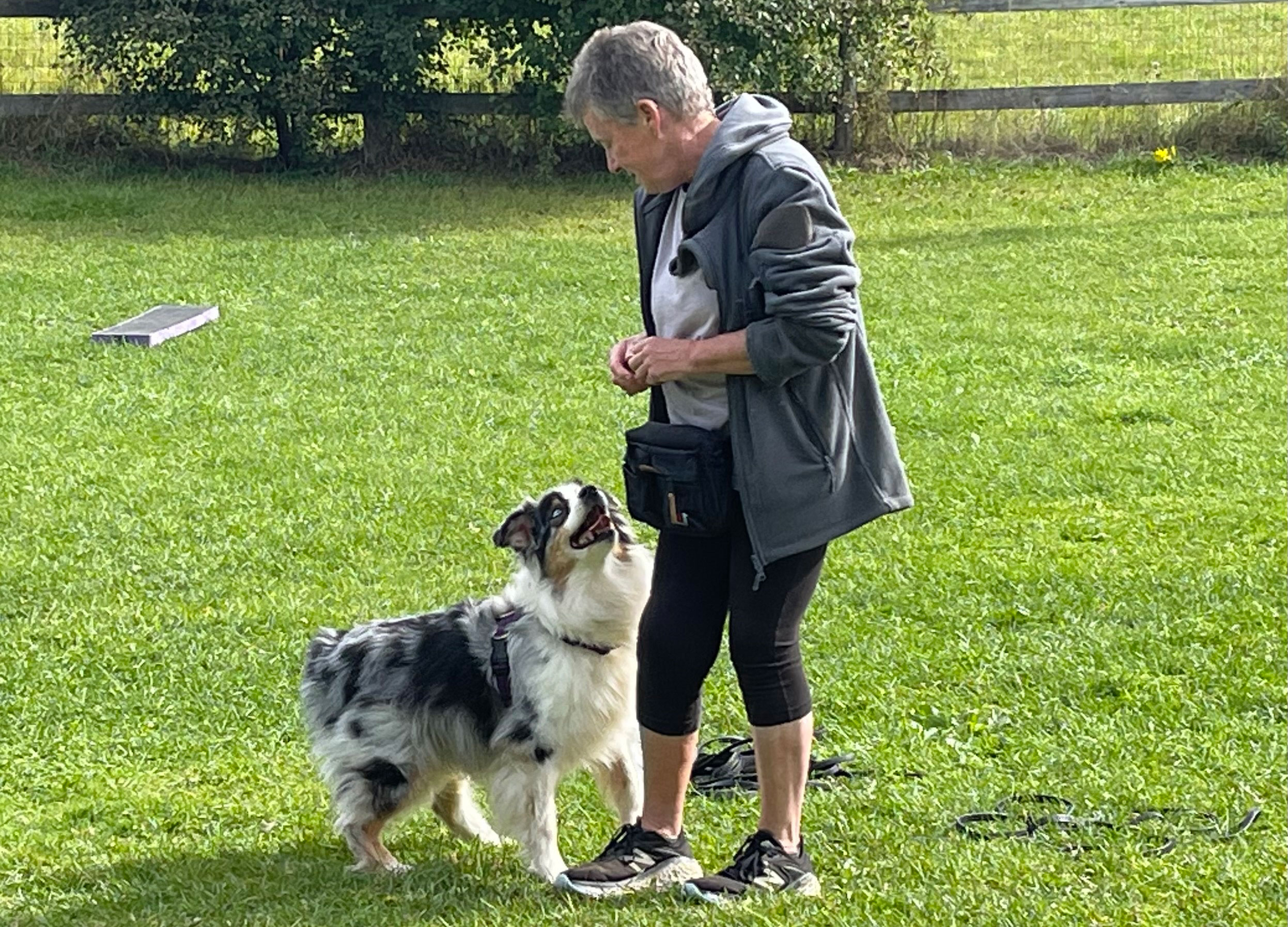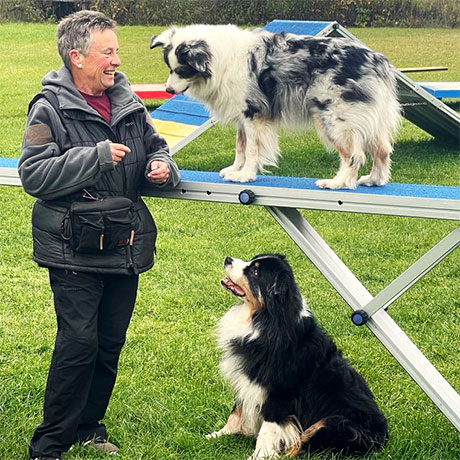What is Engagement and How Does It Look for You and Your Dog?
What is Engagement?
Engagement is more than your dog just obeying commands. It’s the connection that makes your dog want to work with you, even with distractions around. When a dog is engaged, they’re excited, focused, and eager to interact with you.
Signs of an engaged dog:
- They look to you for direction.
- They respond quickly and happily to commands.
- They stay focused on you, even in distracting environments.
- They enjoy doing tasks because they find them rewarding.
- They often check in with you by making eye contact.
Engagement doesn’t happen automatically—it’s something you build over time through positive experiences and trust.

Why is Engagement Important?
- Training Made Easier: A dog that’s focused and motivated is much easier to train. Without engagement, even simple tasks can be difficult.
- Safety in Real-Life Situations: In busy or unpredictable places, like a city or park, an engaged dog is more likely to listen and stay safe.
- Stronger Bond: Engagement helps build a stronger, deeper connection with your dog, fostering trust and respect.
- Boosting Confidence: Dogs that are nervous or easily distracted can feel more secure and focused when they’re engaged with you.
What Does Engagement Look Like?
- Frequent Eye Contact: Your dog will naturally look to you for direction and check in to see what you’re doing.
- Quick Responses to Cues: Engaged dogs respond promptly to commands like “sit” or “come.”
- Offers Behaviors: Your dog may offer behaviors like sitting or giving attention without being asked, showing they’re eager to connect.
- Ignores Distractions: Even in busy environments, a well-engaged dog will stay focused on you.
- Happy Body Language: An engaged dog looks happy, with wagging tails, perked ears, and a relaxed but focused posture.
- Playfulness and Enthusiasm: Your dog will approach training or activities with excitement, showing that they’re enjoying the process.
How to Build Engagement with Your Dog
- Use High-Value Rewards: Give rewards your dog really loves, like favorite treats or toys, only during training to make them special.
- Be Fun and Interesting: Use a happy voice, playful movements, and mix up activities to keep training fun and exciting.
- Train in Short, Fun Sessions: Keep sessions short so your dog stays eager and focused. End on a high note to keep them wanting more.
- Use Engagement Games: Play games like “find it” (where your dog searches for a hidden treat) to build focus and engagement.
- Introduce Distractions Gradually: Start training in quiet places, then slowly add distractions while keeping your dog focused on you.
- Celebrate Check-Ins: Reward your dog every time they voluntarily check in with you, like making eye contact or coming closer.
Common Mistakes to Avoid
- Inconsistent Rewards: If you reward your dog randomly, they may lose motivation. Be consistent, especially when building engagement.
- Only Engaging During Training: Engage with your dog outside of formal training, like during walks or play, so it becomes a natural part of your relationship.
- Too Many Distractions Too Soon:If you introduce distractions too quickly, your dog may struggle. Increase difficulty gradually.
Conclusion
Engagement is the key to a well-behaved, focused dog and a strong bond between you. By making training fun, using rewards, and gradually introducing distractions, your dog will not only listen but also seek out ways to connect with you. Whether you’re training or out in a busy environment, engagement keeps the focus on what matters most—the relationship between you and your dog.
